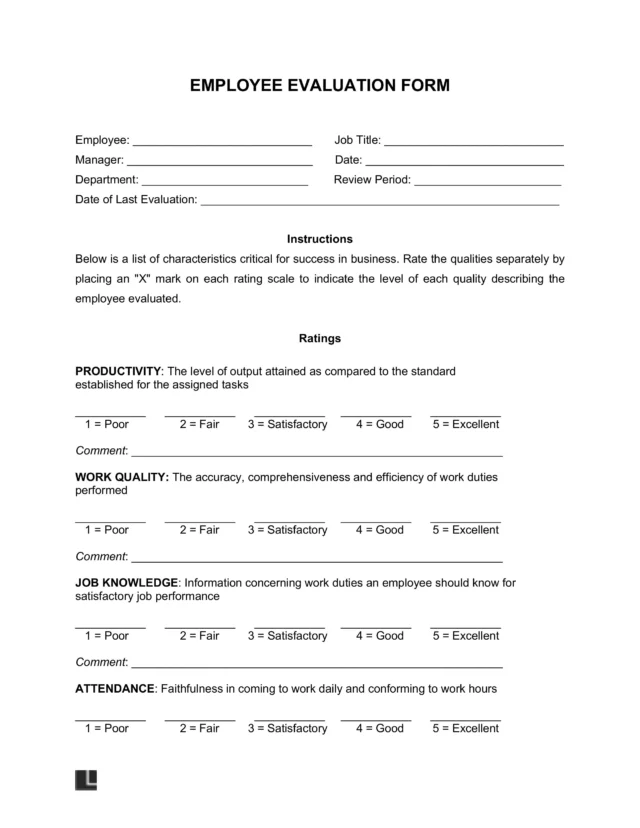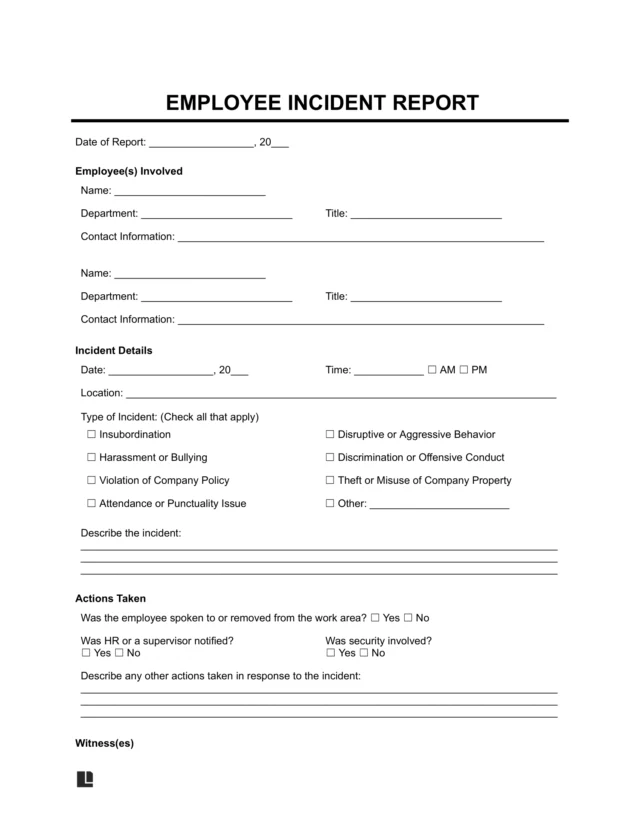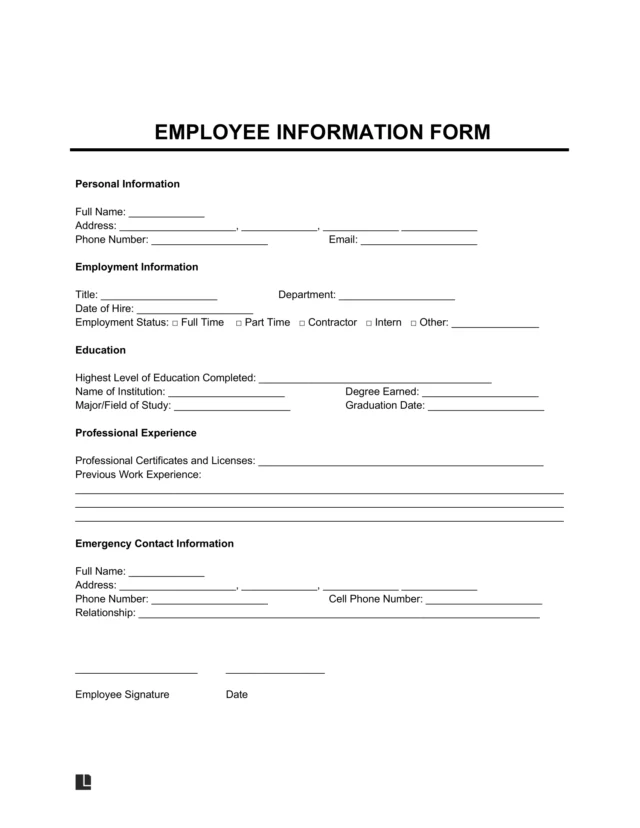What Is an Exit Interview?
An exit interview is a meeting between HR (or a supervisor) and an employee who is leaving their job. It helps the company learn what employees liked and what could be better. It also collects details about how long the person worked there and why they decided to leave.
Legal Templates’s exit interview template makes the process easier and helps the work relationship end on a positive note. Use it as part of your HR routine to give every departing employee a chance to speak openly about their experiences.
What Is the Purpose of an Exit Interview?
An employee exit interview helps employers:
- Learn what encouraged employees to remain at the company until their exit
- Understand why employees decide to leave
- Identify and mitigate factors that cause an undesirable work environment
After an Exit Survey
After an exit survey, you should use the feedback to reflect on your company policies and update them as needed. For example, you may want to revisit your policies for harassment, dress code, and remote work.
5 Exit Interview Questions to Ask
Don’t just use an exit interview to collect baseline information about the worker’s employment. Instead, come prepared with insightful questions, the answers to which can reveal a lot about your workplace environment. Consider the following common exit interview questions to lead productive exit interviews.
1. What Factors Contributed to Your Decision to Leave?
This sample exit interview question helps you understand the reasons behind an employee’s decision to leave. It may be for a specific reason, like stagnant pay. It could also be for a combination of reasons, like an overwhelming workload and dissatisfaction with management. Learning the reason(s) can help your company keep future employees happy and reduce turnover.
2. What Did You Find Most Satisfying About Your Role?
This question helps you learn what parts of the job or company the employee enjoyed the most. Their answers can show you what’s working well. This way, you can promote the positives in job postings and build on them.
3. What Did You Find Least Satisfying About Your Role?
This question invites honest, constructive feedback about what didn’t work. It can highlight problem areas, like poor communication or a lack of training. Understanding these challenges helps your company make meaningful improvements and create better employee morale.
4. Did Your Job Duties Align with Your Expectations?
Want to know if the job matched what the employee expected when they were hired? Ask them whether their expectations aligned with the duties they had to perform. If there’s a gap, it could point to issues with the job description or onboarding process. Knowing these discrepancies can help you write more accurate job descriptions and improve training processes for new hires.
5. What Suggestions Do You Have for Improving the Company?
This open-ended question lets departing team members share ideas or concerns that leadership might have overlooked. Since they’ve experienced the workplace firsthand, they can offer honest feedback about things that may not be obvious. Their insights can uncover blind spots and be the catalyst for change.
How to Write an Employee Exit Interview Form
Writing an employee exit interview form helps you record employee feedback for future reference. If you’re wondering what to write in an exit interview form, explore the key elements below.
1. Date & Employee Details
Record the date on which you’re conducting the interview. Include key information about the employee, such as their name, title, department, supervisor, last day of work, and total time of service.
2. Reason for Leaving
Record the details of their exit, indicating why they are leaving. Our exit interview template lets you choose from various dropdown options. Start with the main reason, such as a resignation, layoff, or retirement. Once you pick the main reason, you can further refine the employee’s grounds.
For example, if the employee is resigning, you can indicate that they’re resigning for reasons like family needs, travel requirements, or educational pursuits. Be sure to talk to the employee to record the reason properly. If it’s a layoff, you can indicate that it’s due to poor performance, inappropriate behavior, or a violation of company policy.
3. Employee Feedback
At this point in the form, you’ll record the employee’s answers to your exit interview questions. Use our listed questions above as a starting point. Inquire about their experiences so you can consider what to keep the same and what to change.
4. Equipment Return Provision
Add a provision stating that the employee must return all company equipment and property upon their departure. Describe each piece of equipment that’s due to you, including an item description, serial number, and the date it was returned.
5. Both Parties’ Signatures
Both parties should sign the document to acknowledge its contents. The employee signs to confirm that all the exit interview data is true to the best of their knowledge. Their signature also indicates that they returned all company equipment.
As the supervisor or HR representative, you should also sign your name. Your signature confirms that you’ve reviewed the information in the form and received company equipment from the employee (if applicable).
Sample Exit Interview Form
View an example exit interview template to help you prepare to lead a final feedback meeting with an employee. When you’re ready, fill out the form to record an employee’s departure. Our downloadable exit interview form template is available in PDF or Word format.
How to Conduct an Exit Interview
Creating a standard process for conducting exit interviews can ensure consistency and help you create a fair feedback collection process. Learn how to conduct the exit interview process below:
- Prepare for the interview: Brainstorm questions to ask using an exit interview questionnaire. Implement a standardized format for each departing employee.
- Schedule a meeting time: Find a time that works for both parties.
- Clarify the purpose: Communicate that this meeting is voluntary but helpful for understanding the team member’s experience.
- Encourage an open dialogue: Create a safe, confidential environment where employees will feel comfortable sharing their thoughts and criticisms.
- Ask questions: Inquire about the employee’s time with your company, asking what they liked and didn’t like.
- Document feedback: Use our exit interview template to record an employee’s responses.
- Implement changes: Analyze the feedback for patterns or recurring issues. Use these insights to make informed changes in your company culture.








